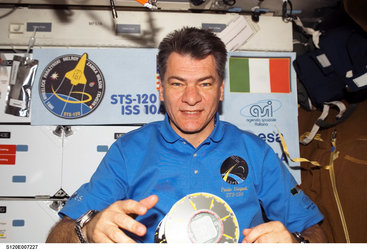Studying Paolo’s brains
ESA astronaut Paolo Nespoli, now working as a flight engineer on the International Space Station, is busy with a range of scientific experiments. The latest is peering inside his head to help understand how the human brain works.
Our brains are changing all the time – nerves are rearranging themselves and the connections between the nerve cells are reforming as the brain memorises new information, stores the old and continuously adapts to new situations.
New experiences, learning, physiological changes, sleep disturbance and fatigue are among the most influential factors.
Sometimes, especially after an accident or a cerebral stroke, the recover power of brain tissue is simply mind-boggling: the remaining healthy tissue can take over the functions of damaged areas.
Space is a stress factor

The weightlessness in orbit is also a big change for brains. Not only are there changes in blood circulation and other physical conditions, but the way that cognitive functions of daily life are managed also alter dramatically.
Adapting to the multitudinous effects that gravity has on the human body and the way the brain deals with them is perhaps the greatest demand that the nervous system has to face in space. The increased load on the cognitive capacity is accompanied by a multitude of stresses on the brain.
On 21 December, his second full working day on the Station, Paolo set up the Neurospat experiment with assistance from crewmate Cady Coleman.
Neurospat aims to detect the brain’s mechanisms involved in the altered behaviour in weightlessness and to locate the crucial parts of the cerebral cortex.
Helping life on Earth

Neurospat uses a laptop computer with a special program, a visor to focus on the computer without external visual distractions and an electroencephalograph to record brain activity.
By recording this activity, European scientists are probing the activity that underlies cognitive processes involved in four different tasks: visual-motor tracking, perception of how the body is oriented, 3D navigation and discriminating the orientation of objects.















